Who has seen the wind? – a short poem by Christina Rossetti – knows the answer to the titular question is "neither you nor I", yet concludes with the line, "But when the trees bow down their heads / The wind is passing by."
As the country braced itself for the arrival of Hurricane Ophelia in October, most took the warning of Met Éireann and stayed indoors, but a few brave souls ventured out to see the trees bow their heads. You can’t see the wind, but you can photograph its effects.
[ WeatherOpens in new window ]
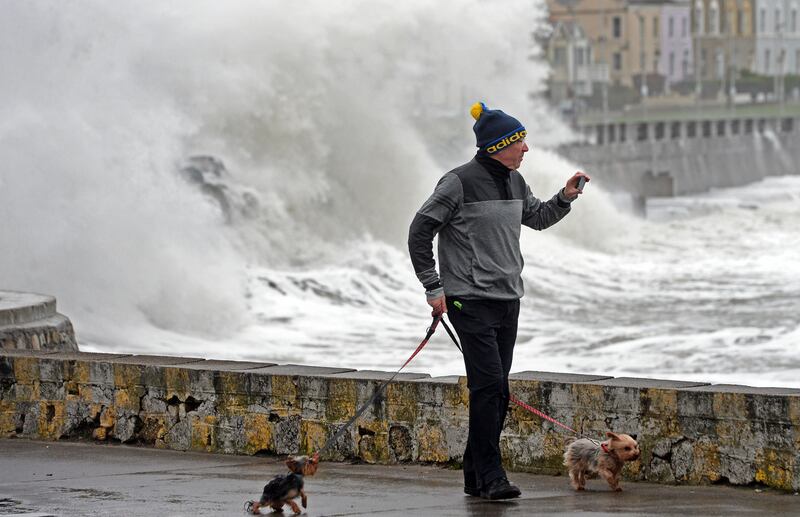
One photographer, Patrick Browne, drove towards the scene in Aglish, Co Waterford, where a falling tree had claimed the life of Claire O’Neill. En route trees fell in front of and behind his car, preventing him from reaching his destination, but leaving him grateful to be alive.
Another, Michael Mac Sweeney, had a very close shave in Cork. While shooting video of trees falling like bowling pins along Centre Park Road in Cork, the tree which he was bracing himself against came down. Luckily the photographer was shaken, not stirred, and the video became something of a viral sensation.
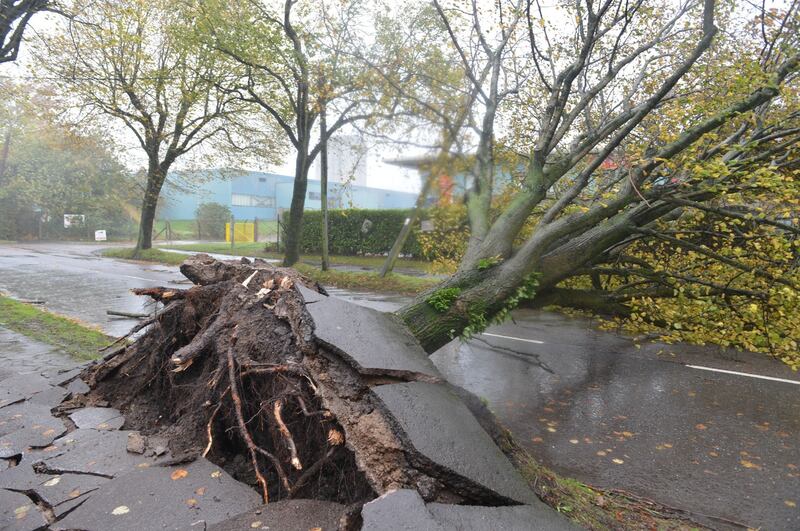
The incidents give some sense of the positions photographers put themselves in throughout their working lives, recording the ordinary and the extraordinary to illustrate today’s news and tomorrow’s history books.
Once again in bringing you our favourite images of the year we lean towards the best images and not necessarily images of the most important events. So while we could fill the magazine with images of the US president you might forgive us for relegating last year’s cover star to a small but funny picture in our World section.
Our own political man of the year, Leo, turns up in a few diverse images but is eclipsed by Cyril Byrne’s superb catch of Frances Fitzgerald, pacing the floor in government buildings on a fraught evening which eventually led to her resignation.
It was a mixed year for local news but the issue of homelessness just won’t go away and is marked by Dara Mac Donaill’s dignified portrait of Mae Robbins, surrounded by her possessions, awaiting eviction.
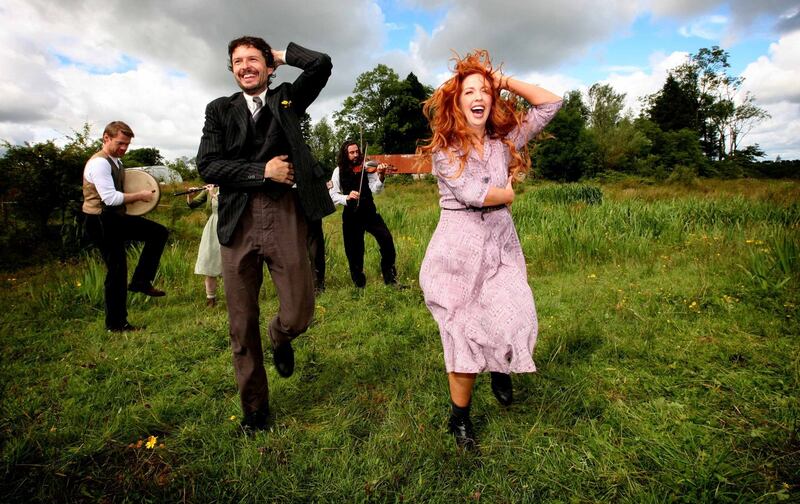
In our People section two images by Dave Meehan jump out, one a crowd scene from the Electric Picnic and the other of two ladies trying their Lotto luck. In our Life section Bryan O’Brien’s landscape view of the final journey of stuntman Pascal Whelan dominates, while downpage Cyril Byrne’s dog has his day. In Nature Alan Betson came across a delightful deer- catching expedition in the Phoenix Park.
World news is somewhat inevitably sombre and includes a surreal view of the Grenfell Tower ablaze, terrorist attacks in Las Vegas and London, and a Brexit “suicide”. Brenda Fitzsimon’s searing portrait of Yeyang Yang, a victim of the long-forgotten US carpet bombing of Laos, reminds us of the perpetual damage of war.
Heartbreaking images of the ongoing Rohingya refugee crisis, amid claims of ethnic cleansing in Myanmar, dominated our screens on the picture desk for much of the year and a superb image by Dan Kitwood is our cover picture for 2017.
We hope you enjoy this selection of work by our own photojournalists, and trusted freelancers and agencies in Ireland and worldwide. If you would like to see other great images which we just couldn’t fit in this issue, take a look at the online galleries we are posting over the coming week at irishtimes.com/news/galleries.
[ News photograph of the yearOpens in new window ]
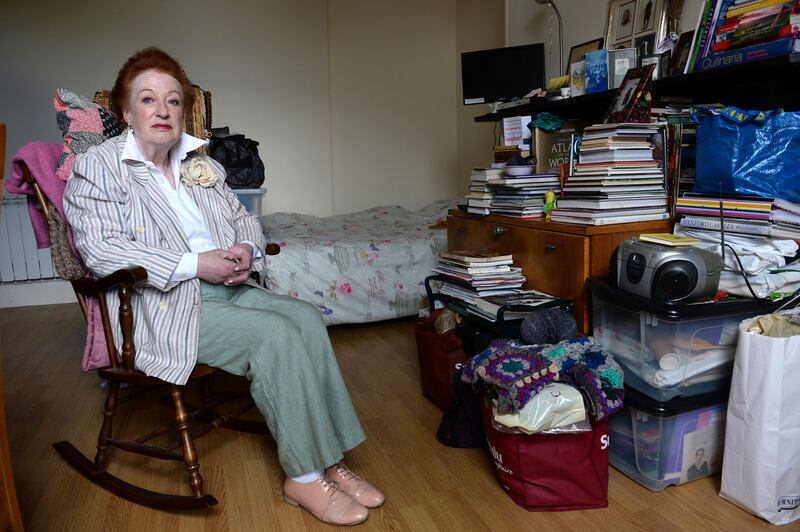
During the summer I was given an assignment to take a photograph of Mae Robbins, who was facing eviction. Her landlord had decided to sell the property and despite months of viewing rental properties Mae had no success on her modest income.
When I arrived at Mae’s one-roomed accommodation I was struck by how she had utilised the limited space as best she could to suit her needs.
Mae was happy to pose for me. I decided to position her beside her belongings with her bed in the background. I chose to use natural light from a nearby window to capture the essence of Mae in her home.
Evictions, rent increases, rising house prices and homelessness are among some of the most pressing problems currently affecting all sectors of society. Unfortunately Mae’s story is just a sample of the ever increasing housing crisis.
[ World photograph of the yearOpens in new window ]
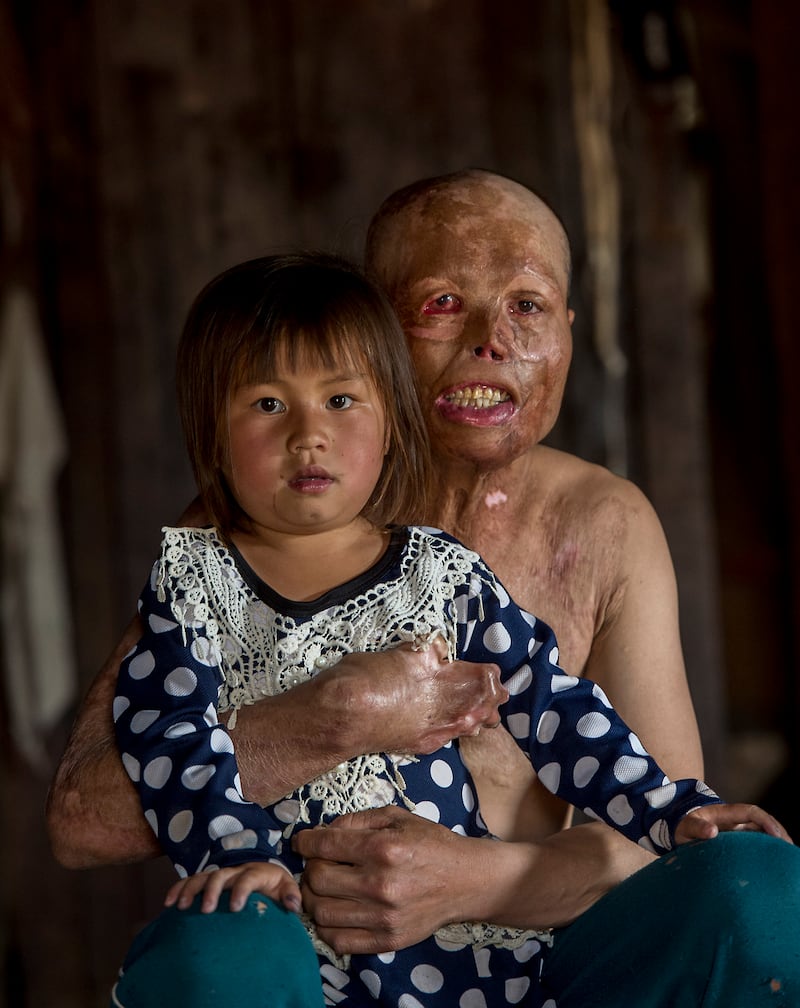
I photographed Yeyang Yang, aged 31, with his daughter Syya (6) at Banxang village, Phonsavan in Laos. Yeyang fell victim to one of the sleeping weapons of war. During what is known as The Secret War, two million tonnes of cluster bombs and other heavy artillery were dropped on Laos between 1964 and 1973. Over 580,000 bombing missions were flown: equal to a planeload of bombs every eight minutes, 24 hours a day, for nine years. They left a devastated land that is still pockmarked and now sentenced to lifetimes of destruction. About 80 million of these bombs did not explode, leaving Laos a densely contaminated land.
Yeyang was burning rubbish at his home when the heat of the fire ignited a UXO (Unexploded Ordnance) in the ground. He spent eight months in hospital undergoing several gruelling skin grafts. These were so painful that he refused to have any more. It took him years to pluck up the courage to leave his house. Depressed, he felt functionless among his community, where it is considered vital to work and contribute to the family.
Yeyang can’t work on the farm as the sunlight is too strong for his skin, he also has brain injuries, and gets exhausted, becoming overwhelmed easily.
It is 44 years since the last US bombing mission in Laos. Every year hundreds of people’s lives are changed forever by being maimed by UXOs. They are the ever-patient sleeping enemy, that waits to surprise each new innocent victim with a legacy that will haunt Laos forever.
[ Life photograph of the yearOpens in new window ]
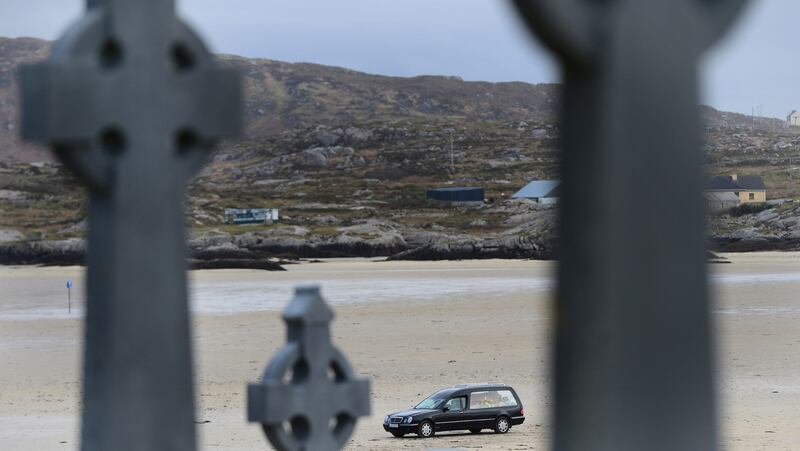
It’s not every day of the week that a hearse crosses a beach to bring a man to his burial on the island he called home. I took this photo on February 8th, and it shows the remains of Pascal Whelan (75), the last permanent resident of Omey Island, Connemara, returning across the sands to the island at low tide, for burial after his funeral mass on the mainland at nearby Claddaghduff.
Pascal’s mother came from the island and he played there as a child, although his life took him around the world. He became a wrestler and stuntman while living in Australia, and went on to appear in such movies as Butch Cassidy and the Sundance Kid, Live and Let Die and Crocodile Dundee.
However after the death of a work colleague and friend, during a live show, Pascal retired from stunt work. He moved back to Omey 35 years ago, and lived in a mobile home, growing vegetables, and picking winkles, oysters and clams. In summer, he fished for lobsters and crab, went diving and assisted in search and rescues.
A well known character, who was popular with both local people and visitors to the area, Pascal’s funeral was packed with mourners who then drove in a long line behind the hearse to make the kilometre-long journey across the strand.
As the cortege reached the island, the hearse, and a car containing immediate family, separated to drive past Pascal’s caravan, taking him home for the last time. On their return I took this picture from high up in the graveyard, looking back towards the mainland.
I focused on the hearse, and framed it between Celtic crosses from the graveyard. I made a lot of photos that day, such as the lengthy cortege crossing the strand, the coffin being carried up the hill to the grave and so on, but this image works best of all to tell the story.
[ Nature and Environment photograph of the yearOpens in new window ]
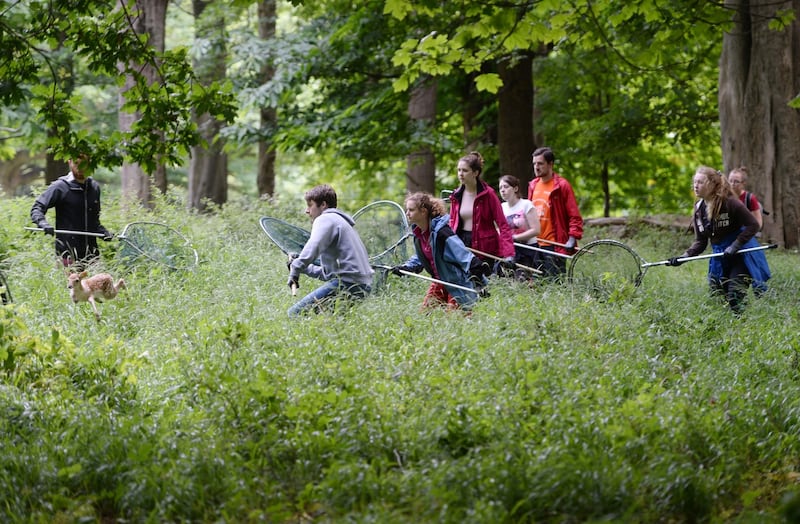
When you go down to the woods today you’re sure of a big surprise!
There was never a truer word said, as on a photographically quiet day in June, I was searching around for any sort of a picture, when I stumbled upon a group of people in the Phoenix Park, leaning on what looked like large butterfly catching nets.
It turned out to be veterinary students from UCD and members of the OPW participating in the annual tagging of newly-born fawns, the most recent additions to the parks deer population. Despite the fact that the process has been going on for the last 25 years, it was new to me and my photojournalistic colleagues.
The students set off in lines combing the undergrowth, scouring the hidden hills and dales of the park for the fawns who have to be found and tagged within a short timeframe before they get to big, and too fast to catch.
There is a real danger of standing on a hidden fawn, as they blend in with the long grass in seamless camouflage. Silently, the search continued through nettles and woods, until a subtle whistle made everyone freeze. A small hand gesture and a quiet circling is followed by a momentary flurry of action. Then the rather swift and efficient process of tagging, measuring, weighing and DNA sampling is carried out by the team.
After a little squeal at the moment of ear piercing, the fawn is set free, sporting shiny new ear tags. About 100 fawns were born during the summer, adding to an overall herd of about 500, one of the healthiest and most studied herds in Europe.
Watch the video at irishtimes.com
[ People photographs of the yearOpens in new window ]

[ Politics photographs of the yearOpens in new window ]
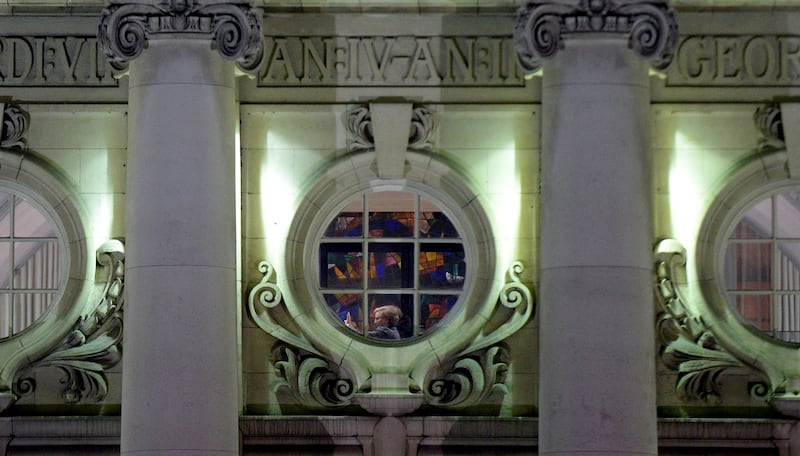
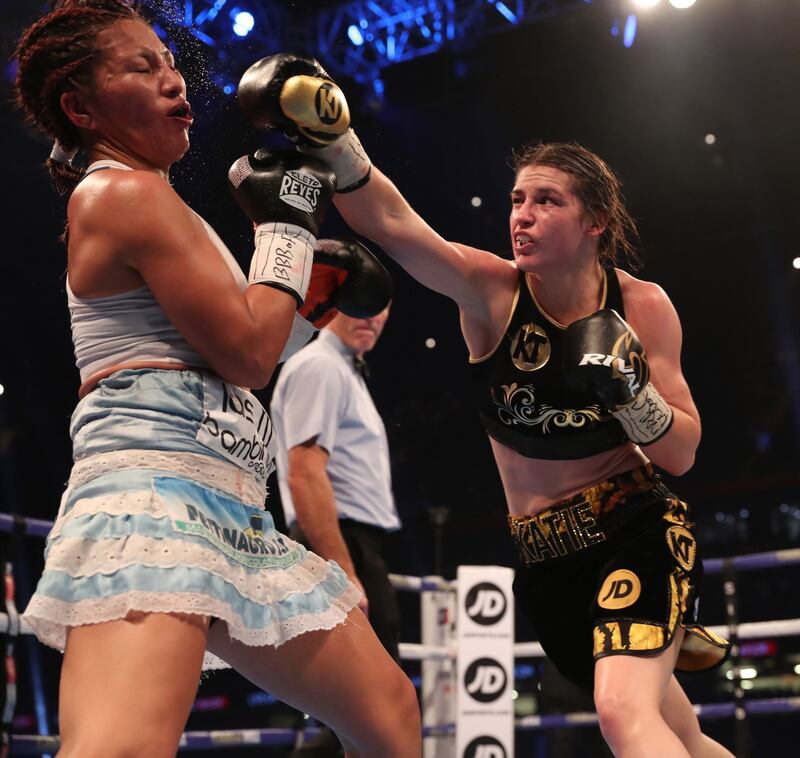
More galleries will be posted throughout the coming week on this page.
To view the galleries above and more, visit www.irishtimes.com/news/galleries














